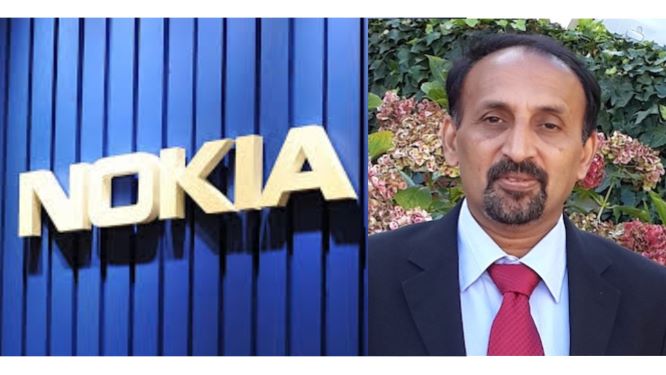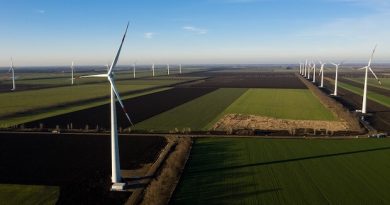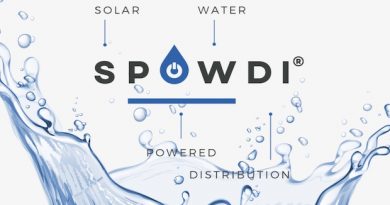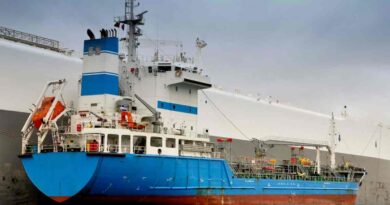In Conversation with Santhosh S Nair, Director of Energy Segment-Asia, Nokia

The Indian market is a critical market for Nokia, where, thanks to its huge telecom network investments, it already has close to 16000 employees. Santhosh S Nair was speaking to Group Editor at Saur Energy and Co-Founder of I am Renew, Prasanna Singh.
Tell us about the work Nokia is doing in India in the smart energy grid space.
Nokia, as you know, is primarily a communications company. So for Nokia globally and for India specifically, there are a couple of sectors we are focusing beyond telco while keeping telco as our major play. We can see that there’s a lot of growth in the energy and transport segments. So, it’s about using our base skills for applications on the energy segment, where we can see possibilities in energy including renewables.
Nokia recently launched a private smart grid run by LTE in Brazil. How does that work?
So LTE (long term evolution) is where we are after moving from 3G to 4G and now 5G.
In fact when we all talk about industry 4.0, we are talking about IOT, (Internet of things) and analytics driven efficiencies applied in industries, and the energy industry is one where relevance and influx of IoTs is high. Every part of the energy network needs to be sensed. To sense in real time, you need to have real time connectivity with low latency communication. There are lot of grid edge systems and devices being added to the utility network eg Renewables, Storage, EVs, smart meters, asset sensors. This necessitates edge computing and real time communication and response capabilities coming. With the rise of renewables energy sources which are often highly distributed energy sources and often in remote areas,. These assets need to be connected. That’s where Nokia is positioning itself to help build a reliable, secure and resilient smart grid . And we see that there’s a real scope of energy sector which need more secure, with more reliable networks coming with LTE, that kind of speed and response to any problems in the network.
An obvious challenge here is the spectrum, as that is controlled by telecom operators. So we work together with them where required. In places like Australia, large mining firms like BHP, Rio Tinto, managed to get spectrum for themselves by making a case for secure networks for themselves. Even in the US, multiple utility firms are pushing jointly to have spectrum allocated for their requirements.
In terms of actual impact, can you give us some idea of the impact?
In terms of numbers, we’re seeing that even 60-70 percent savings are possible in certain areas, be it maintenance, or efficiencies.
So where are these cost savings coming from, when it comes to Renewable Energy setups, especially Wind Installations that you spoke about?
Primarily, especially with renewable energy, we have important assets which are in remote areas and the wind farms are susceptible to a lot of mechanical problems. So if there is a change in wind direction, sometimes the pitch assembly gets worn out, that’s a problem. So to send a crew out there, and bring it back for repairs, involves a high cost. So identifying a problem build up early on, can be really important. So that’s a really good case for saving downtime.
*Edge computing is computing that’s done at or near the source of the data, rather than cloud servers at a data centre. Thus, it speeds up response and data processing even further.
You must have heard about the wildfires in California. So according to public reports, out of 21 fires, 17 were attributed to utility-related issues. like falling live wire. A fast sense and response mechanism should be able to detect the issue and denergize the line before it touches down. It’s a big use case.
So basically you’re saying you’re offering a solution which kind combines interlinked devices like cameras, IOT and more…
Any kind of sensing device, whether it is a camera for surveillance or it’s a sensor which is set for predictive maintenance, it all can be brought back, and it can be even looked at Edge computing way, especially in terms of autonomous vehicles where you need to communicate using video in vehicles. You need to have real-time inputs. You don’t have the luxury of getting it back the same day. So you need that kind of EDGE communication. So that’s where these kinds of solutions will come into play.
I also read about how this can make the grid smarter to adapt to renewables. How does that work?
Definitely. Managing renewables based supply is a big challenge for the utility because of the interruptible nature. It can suddenly spike, or go down even. You have a solar set up generating and a cloud cover can reduce the generation. Wind direction can change and reduce generation. And then the amount of renewables in the grid is now really going up. And in the case of India, it’s almost about 20% renewables now (Capacity). So imagine a situation where suddenly you lose a set of renewables which have been generating and you need to get back to stability. So you need to really sense the renewable generation on a real-time basis. And optimise your demand-supply mix. So this is a challenge for every utility. Especially transmission, and going forward distribution. So distribution utilities typically have not been doing this kind of a job. Now suddenly you have multiple generating sources and supplying it to you and then they need the right data to manage the quality of the lines. So that’s again a use case where we need to react faster. Of course, it’s just not communication. You need analytics also. So that’s where analytics and optimization is a part of it.
So you spoke about the discoms. Where does India stand vis-a-vis other markets you’ve seen in terms of the quality of the grid right now?
I guess the Indian grid, of course, is comparable to many other markets. The difference in the Indian market is that we still have a shortage. The difference in the Indian market is that we still have a power shortage. A shortage in terms of supply compared to demand. A shortage in terms of transmission and distribution capacity. Some of the other markets have got a surplus capacity. So that’s one major difference. While the technology play is same , the application outcomes and objectives may differ. One of the good things in India is that now having these kinds of solar parks with connectivity coming up and also having renewable driven setup, growth of renewables are well supported from an infrastructure point of view. However there’s much to be done in terms integrating the renewables and optimizing the energy mix and maintain grid stability. So things are looking up, but there’s much to be done.
India is probably one of the most price-sensitive markets locally, right? How does that impact you? Does that mean you have to find innovative ways to sell your solutions?
While India is price sensitive, India has scale also. Scale sometimes compensates for lower prices. As you’ve seen in solar. India has brought down the solar price to about 3-4 cents now. But technology is complimenting that. So low prices are really a short term concern, technology should eventually compensate.
So do you have models which are linked to productivity improvements and cost savings or how does it work?
As an example, in India’s case, look at smart metering. Smart metering itself is a big business case for India because the distribution losses here are as high as 15, even 20%. Ideally, losses should be 6 or 7 percent. So if smart meters help bring down that it’s already paid for.
It does this by ensuring you get to know at any point of time what somebody’s consuming. Today a utility gets to know at the end of the month. If you see the parameters of consumption almost every 15 minutes or every 30 minutes that gives you a real-time consumption pattern. So you can predict demand better. Manage your supply at the right time. And also you know how much you’re pumping into the grid from the generation and how much is being consumed. So any anomalies whether it is theft, losses can be detected and you can always plug it. That’s at utility end. At customer end, it can help with energy efficiency because now you can tell a customer that utility would be able to provide them a better plan if they can shift their consumption, so flexible pricing can get introduced here .
So today whatever telcos do, a utility can too. So prepaid metering becomes an option. And like a telco, more plans and more options for the customer. Thus, it can help both ways, by helping the utility to reduce their losses, improve collections, better accuracy of their billing systems and all these things on the consumer side, like energy efficiency, reduce bill shocks..
How can your solutions work at say, a mini-grid level?
Today, for the power you are paying nine cents or 8 cents per unit (Rs 5.50 to Rs 6). Our solutions don’t really add to that cost any more and deliver efficiencies to boot, that could actually reduce the cost for everyone in the mini-grid. With battery storage costs coming down, the possibilities from better management driven by our inputs go up further still. With solar power prices coming down, the case is very strong.
How does implementation work? Do you place your own people out there, or train people, or track remotely?
Nokia supports it. Nokia has got a good skill set supporting that as a vendor. We also work as a service provider to operate it. But we haven’t seen that in many cases yet because many of the times people don’t want to do it in-house, except maybe minor service operation, managing network.
So does the ‘Smart City’ push support your own marketing well?
Smart cities are something we’ve been dealing for long. There’s no single definition of smart cities. Smart City IOT use cases are many. It could be smart parking or security, traffic alerts, public safety or other things around utility infrastructures where utility infrastructure can be leveraged to provide city services .
When you look at the market for your services, what is that one single factor that attracts you?
Market size. There’s no strict benchmark really, so we generally look at the potential for long term solutions and how much you can grow in a few years time. If it can sustain double-digit growth or more in the next three years four years, it’s a good market.
With the continuous growth of course. We also look at the changing industry landscape. If the industry is changing to a more deregulated industry, for example, that’s an important aspect, because deregulation brings you a lot of play for efficiency and digitisation.
Published with permission from Saur Energy




